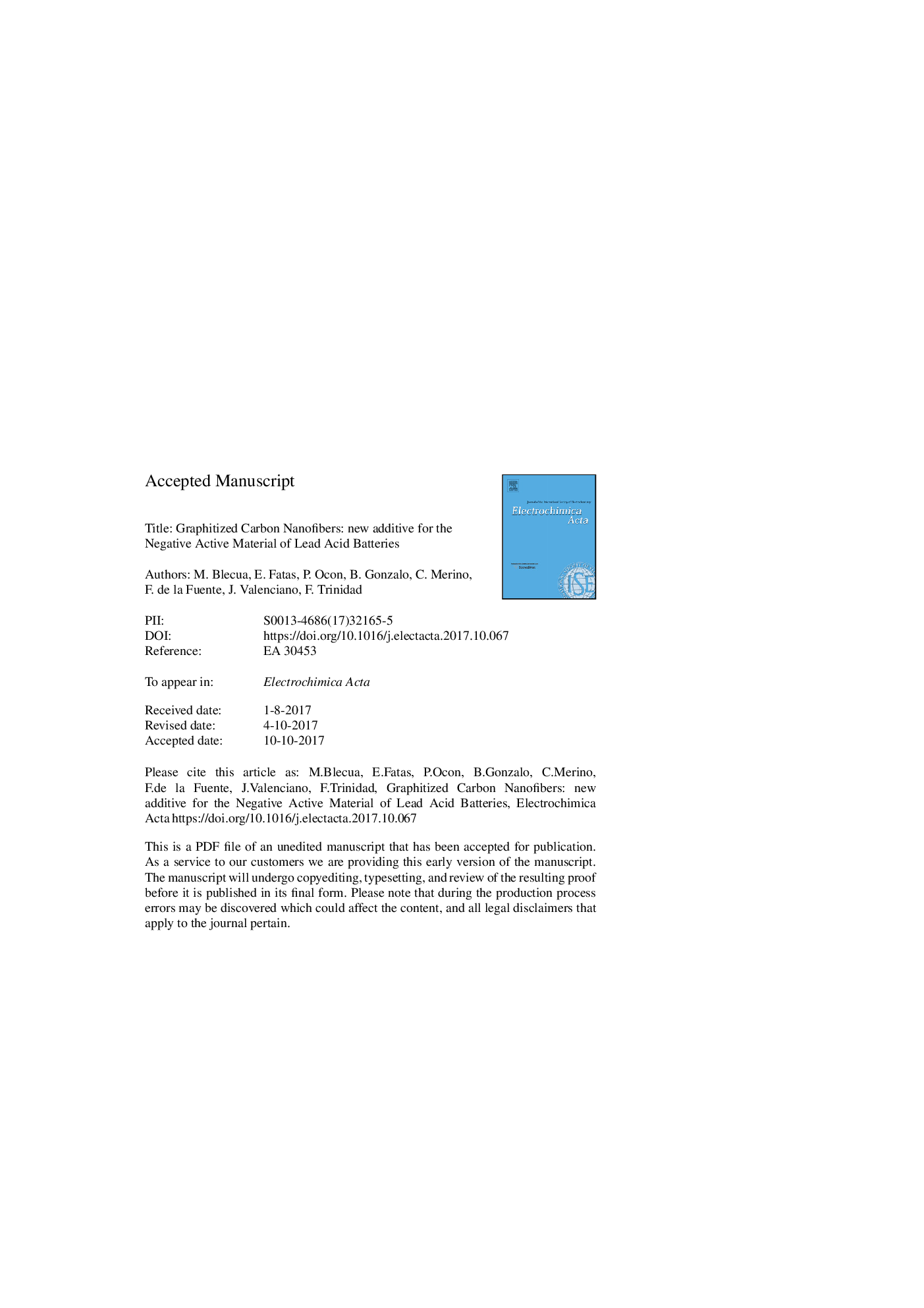| Article ID | Journal | Published Year | Pages | File Type |
|---|---|---|---|---|
| 6605290 | Electrochimica Acta | 2017 | 36 Pages |
Abstract
Graphitized Carbon Nanofibers (GANFg) were dispersed with a certain amount of organic expander and used as additive for the negative plates of the Lead Acid Batteries (LABs). Due to the high aspect ratio of these fibers, they are thought to reach the percolation threshold inside the Negative Active Material (NAM) and create a conductive network which would improve the cycle life of the LABs working in Partial State of Charge (PSoC) conditions. These fibers were added at three concentrations (0.50, 0.20 and 0.10Â wt. %) and dispersed in a sodium lignosulfonate aqueous solution. Unformed negative plates of three mixtures were prepared, together with a NAM Control sample, and 2Â V/1Â Ah small lead acid cells were assembled for testing the electrical performance of the different mixtures (capacity, cold cranking ability, charge acceptance, negative polarization study, PSoC cycles and Cyclic Voltammetry (CV)). Continuous physicochemical analysis was carried out for the negative plates. As a result, Carbon Nanofibers were able to increase cell cycle life working in PSoC conditions and slightly improve the charge acceptance, but also raised the water loss. However, this gassing increase was lower for Carbon Nanofibers in comparison with other carbon materials used in flooded LABs.
Related Topics
Physical Sciences and Engineering
Chemical Engineering
Chemical Engineering (General)
Authors
M. Blecua, E. Fatas, P. Ocon, B. Gonzalo, C. Merino, F. de la Fuente, J. Valenciano, F. Trinidad,
